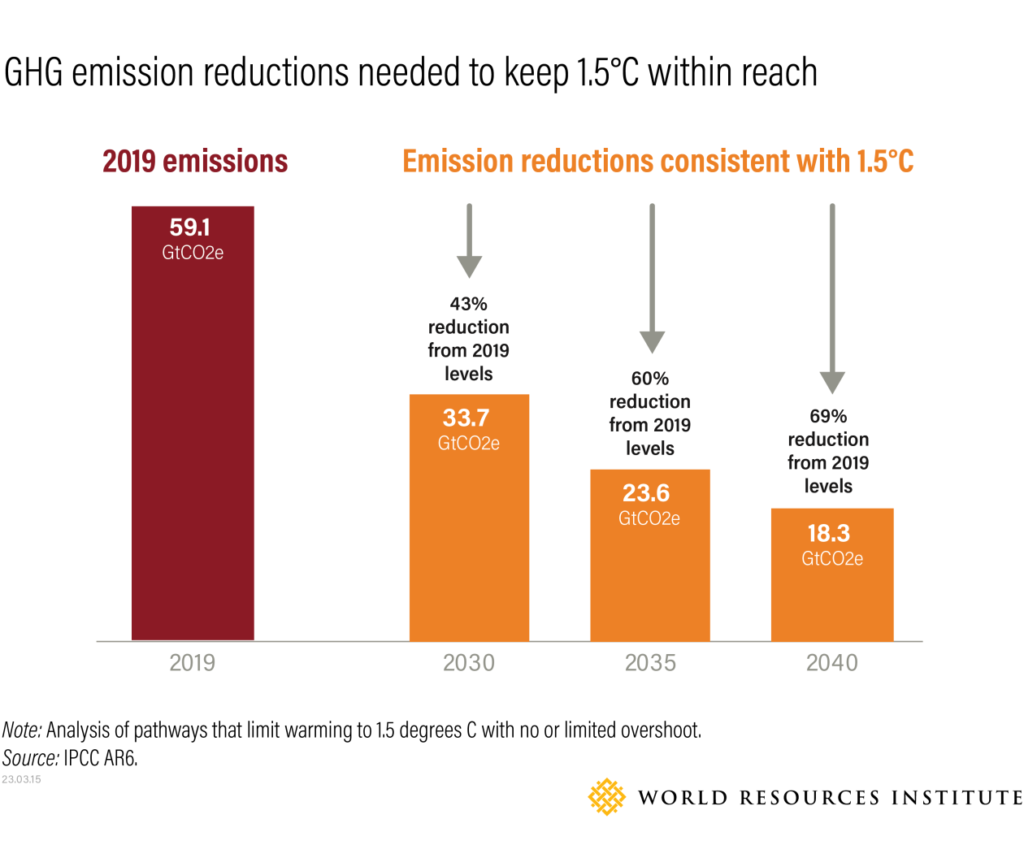The UN Intergovernmental Panel on Climate Change’s (IPCC) 6th Assessment Summary Report underscores points about climate change and its impacts. We believe that hope and action will save us. Here’s why.
The IPCC (Intergovernmental Panel on Climate Change) is a scientific group assembled by the United Nations to monitor global science related to climate change. The sixth cycle of publication began in 2018 and since then, the IPCC has released a new climate report, updating and consolidating findings from a series of previous reports. This is the last assessment for a long time – by the time the next one is out (around 2030), the world will be in a much different shape.
In 2023’s edition, some 10,000 pages of dense scientific prose are synthesised in a succinct 37 pages. UN Secretary-General Antonio Guterres says it bluntly: “This report is a clarion call to massively fast-track climate efforts by every country and every sector and on every timeframe. In short, our world needs climate action on all fronts — everything, everywhere, all at once.”

1 – 1.5°C is still attainable
The IPCC report says that warming will likely lead us to above 1.5C in the near term unless we act now. So yes, it is still attainable. Climate change can be limited by deep and sustainable decarbonisation and emission reduction. In fact, as Fatih Birol insists, “it would be factually incorrect and politically very wrong” to kill our goal of 1.5C. According to the report, if we continue at this rate, projections state that we would exceed the carbon budget we have left to stay below the Paris Agreement’s 1.5C limit but if we manage to halve greenhouse gases by 2030 (more on this in point 4), change is possible. Encouragingly, the Director of the Brookings Institution’s energy security and climate initiative, Samantha Gross notes, “The 1.5 goal is going to be tough,” but thanks to the Inflation Reduction Act, “we’re putting the US on a path to keep that goal possible. That ain’t nothing.” Samantha is referring to the US’s climate legislation passed in August 2022 that holds it accountable to the 1.5°C Paris Agreement – systems of accountability exist.
2 – We now have concrete end-targets for the next decade
And they are: Halve emissions by 2030, 60% emissions reduction by 2035, and net zero by 2050.
The addition of the 2035 target in the report adds both urgency and clarity to end-targets for the next round of 10-year climate pledges that countries will make in 2025. In this deep, rapid and sustained decarbonisation effort, the UN urges us to centre climate justice. Targets are not everything. Rapid changes are already taking place, and they disproportionately impact more than 3 billion people – about half of the global population currently contends with severe water scarcity for at least one month per year. And since 2008, extreme floods and storms have forced over 20 million people from their homes every year. Every fraction of a degree of warming will intensify these threats.

3 – Readily available and highly cost-effective actions already exist
The good news is that there are multiple opportunities for scaling up climate action. With sufficient support, proven and readily available adaptation solutions can build resilience to climate risks. Ecosystem-based adaptation, for example, can help communities adapt to devastating impacts, while also safeguarding biodiversity, improving health outcomes, bolstering food security, and enhancing carbon sequestration. Commitment to divestment from fossil fuels and investment in renewables, climate finance, carbon removal technologies, etc is the way forward – and the wheels are already turning! To add to the mix, last year at COP27, the “loss and damage” fund was finally passed, making it easier to move the money. Guterres even called on developed countries to accelerate their plans, moving their 2050 pledges to end emissions up to 2040. “The transition must cover the entire economy,” he said. “Partial pledges won’t cut it.”
4 – We can, and need to, unite to take timely action
Although the window to address the climate crisis is rapidly closing, the IPCC confirms that we can still secure a safe, livable future. What can we do? Expand renewable energy, invest in carbon removal technologies, increase climate finance, prioritise climate justice, phase out fossil fuel infrastructure, and pressure governments on climate policies. The world must rapidly shift away from burning fossil fuels — the number one cause of the climate crisis (relatedly, join the call to world leaders to #ListenToTheScience and endorse the #FossilFuelTreaty to phase out fossil fuels). In addition to fossil fuels, deep emission cuts are necessary across all of society to combat the climate crisis – power generation, buildings, industry, and transport are responsible for close to 80% of global emissions while agriculture.
We need all hands on deck, there’s no time to waste.
FEATURED IMAGE: via Pexels | IMAGE DESCRIPTION: Close-up of a green leaf
